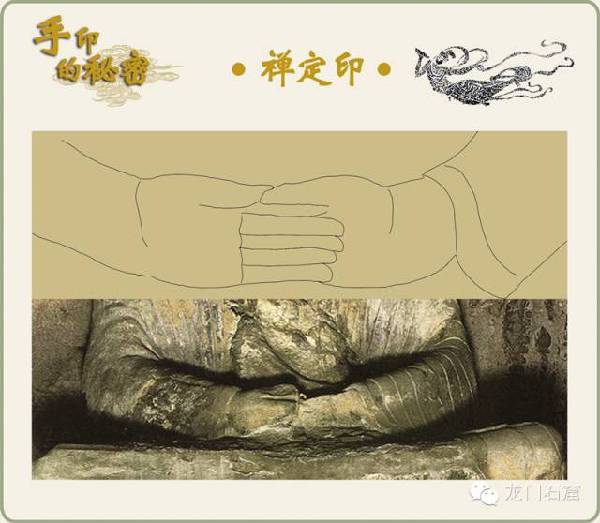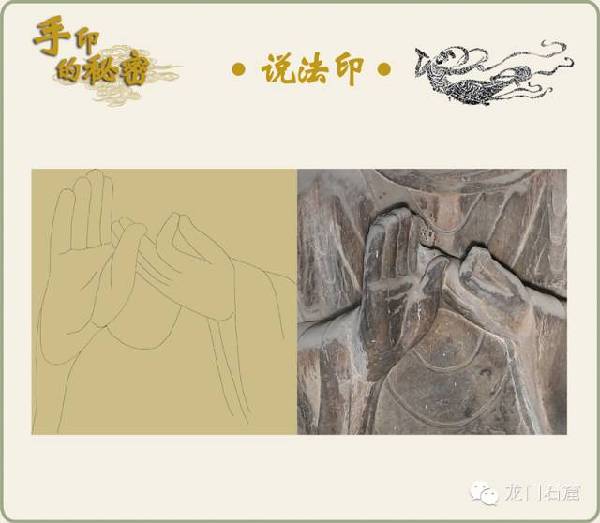Secret of Buddha's hand mudras and Longmen Grottoes
Updated: 2015-10-19
 |
|
The main Buddha in Guyang Cave with the Dhyāna mudra, gesture of meditation [Photo / Longmen Grottoes on WeChat] |
The Dhyāna mudra, or the gesture of meditation, is performed when both hands are rested on the lap, with palms facing upwards and four fingers resting on each other and the thumbs facing upwards towards one another diagonally. This mudra is used in representations of the Śākyamuni Buddha and Amitābha Buddha. It originated in India most likely in the Gandhāra and in China, during the Wei period.
 |
|
The main Buddha in Gaopingjunwang Cave and the Dharmachakra mudra [Photo / Longmen Grottoes on WeChat] |
The Dharmachakra mudra is the gesture of teaching, with both hands in front of the chest, the right palm forward and the left palm upward, sometimes facing the chest, and tips of the index finger and the thumps touching. The Dharmachakra mudra represents the moment in the life of Buddha when he preached his first sermon after his Enlightenment in Deer Park in Sarnath.






